- Source and Composition
- Ayurvedic Classification and References
- Pharmacological actions (modern research)
- Adaptogenic and stress-resilience effects
- Antioxidant and anti-inflammatory activity
- Neuroprotective and procognitive actions
- Antiviral effects
- Androgenic and reproductive support
- Anti-diabetic and metabolic regulation
- Cardioprotective effects
- Skeletal and bone health
- Gastroprotection and anti-ulcer effects
- Wound-healing properties
- Analgesic and neuromodulatory actions
- Mitochondrial bioenergetics and ATP production
- Therapeutic Applications
- General Debility, Chronic Fatigue, and Post-Illness Recovery
- Sexual Health: Vajikarana Rasayana
- Metabolic Disorders: Diabetes, Obesity, and Dyslipidemia
- Neurological Disorders: Memory, Cognitive Decline, and Depression
- Musculoskeletal Disorders: Arthritis, Osteoporosis, and Fracture Healing
- Immunity and Recurrent Infections
- Cardiovascular Protection
- Viral Infections: HSV, HIV, and Hepatitis
- Classical Dosage Guidelines (Charaka, Rasatarangini, Bhavaprakasha)
- Safety Profile and Precautions
- Global Market and Contemporary Use
- Fake versus authentic sources
- Frequently Asked Questions (FAQs)
- References
Himalayan Shilajit is one of the most revered natural substances in Ayurveda. Classical texts such as the Charaka Samhita (Chikitsa Sthana 1/30) and Sushruta Samhita (Chikitsa Sthana 27/23) describe it as a Rasayana, or rejuvenative compound, capable of restoring vitality, enhancing longevity, and combating disease [1]. Ayurveda also refers to Shilajit as a Yogavahi, meaning it acts as a catalyst that enhances the therapeutic action of other herbs and minerals with which it is combined [2].
From a modern perspective, Shilajit is a herbo-mineral exudate found in high-altitude mountain ranges such as the Himalayas, Altai, Caucasus, and Andes. It is a blackish-brown resin-like substance that emerges from rock crevices during the summer months due to the geological and microbial decomposition of plant matter over centuries [3]. Chemically, it contains fulvic acid, humic acid, dibenzo-α-pyrones, and more than 80 trace minerals [4]. These bioactive compounds are increasingly recognized for their adaptogenic and mitochondrial-supporting properties, aligning with Ayurveda’s ancient claims of systemic rejuvenation.
Etymology and Meaning
The Sanskrit word Śilājatu (शिलाजतु) translates as “rock invincible” or “conqueror of mountains and destroyer of weakness.” The word combines Shila (rock) and Jatu (gum or resin). Ancient physicians described it as a substance capable of enhancing strength, intellect, and resilience, and as a destroyer of weakness and disease [5].
Historical Use in Ayurveda and Siddha Traditions
Ayurvedic authorities devoted significant attention to Shilajit. The Charaka Samhita identifies it as effective in conditions like Prameha (diabetes), Pandu (anemia), Shosha (wasting disorders), and Kushtha (skin diseases) [6]. Bhavaprakasha Nighantu describes multiple varieties—Lauha (iron), Tamra (copper), Rajat (silver), and Swarna (gold)—each with distinct therapeutic properties [7].
In Siddha medicine, Shilajit (locally called kanmadam) has been prescribed for reproductive health, chronic fatigue, and post-illness recovery. Tibetan Sowa-Rigpa traditions also used Shilajit (brag-shun) as a rejuvenative elixir [8]. Importantly, historical texts emphasized purification (Shodhana) using herbal decoctions or milk, which ensured safety and potency before clinical use [9].
Global Recognition as a Natural Adaptogen
In modern times, Shilajit has gained global recognition as an adaptogen—a substance that improves resilience against stress and restores physiological balance. This mirrors Ayurveda’s concept of Rasayana, which emphasizes systemic rejuvenation rather than symptomatic relief [10].
Today, clinical studies suggest Shilajit may support mitochondrial function, slow aspects of aging, enhance cognition, and improve reproductive health. It is widely used in sports nutrition, longevity research, and integrative medicine. Authentic purified Shilajit, however, remains rare, making proper sourcing and quality control essential for therapeutic effectiveness.
Source and Composition
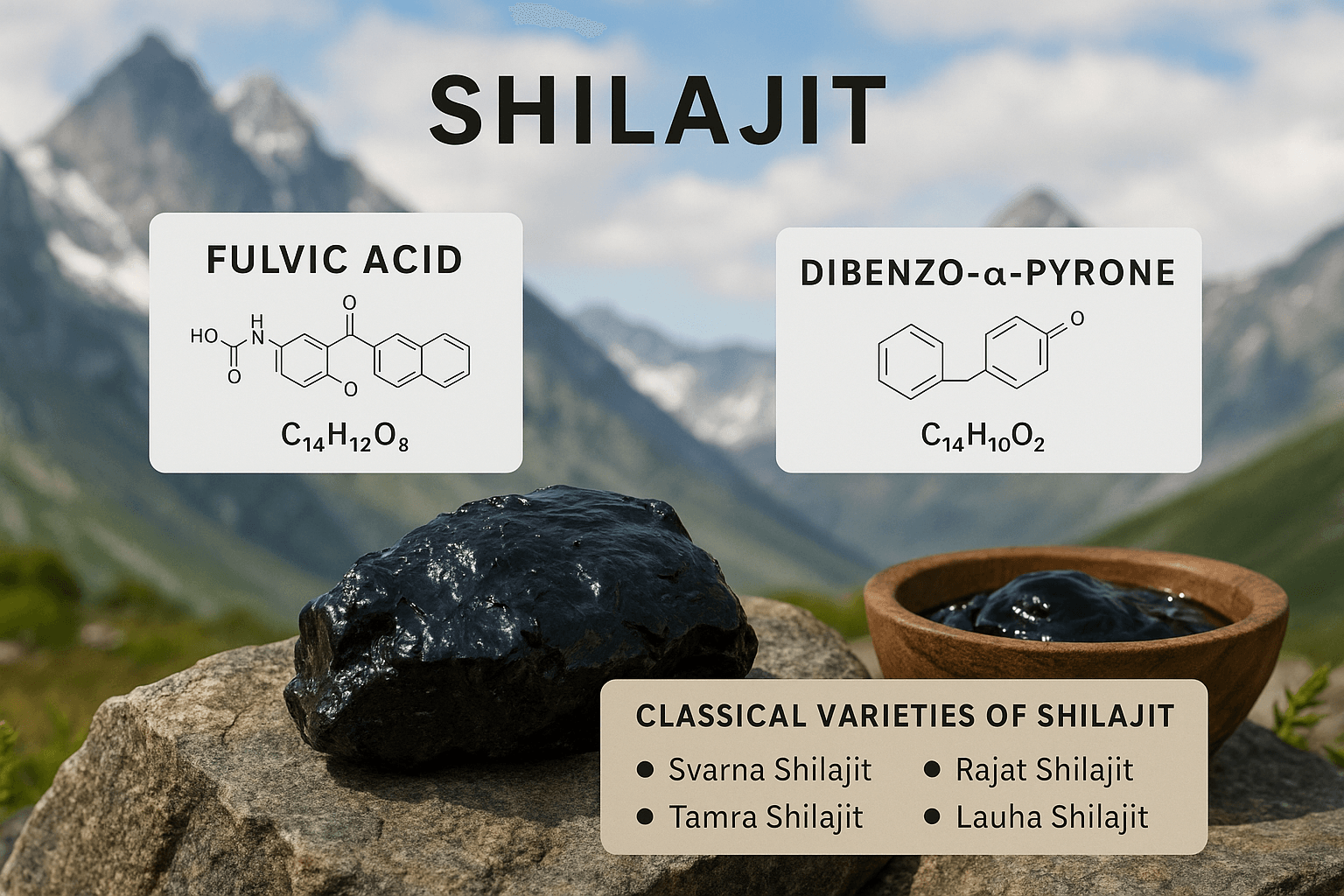
Geological Formation
Shilajit is the result of a slow geological and biological process that takes place over centuries. Layers of medicinal plants and organic matter are trapped within mountain crevices and subjected to high pressure, fluctuating temperatures, and microbial action. Over time, this unique combination of environmental forces transforms the organic material into a thick, tar-like resin that oozes out of rocks during the summer months when heat softens the substance. In Ayurveda, this natural exudate is referred to as Shilajatu, meaning the “essence of the rocks,” highlighting both its origin and its concentrated therapeutic potential [11].
Regions of Occurrence
Although Shilajit is most famous in the Himalayan ranges of India, Nepal, and Bhutan, it also appears in other high-altitude regions of the world. Deposits have been documented in the Altai mountains of Russia and Mongolia, the Caucasus ranges of Eastern Europe, and the Andes in South America. Himalayan Shilajit is traditionally regarded as the most potent because of the unique flora that contributes to its formation, while variations in other regions affect both the mineral profile and therapeutic potency. For instance, Himalayan Shilajit tends to have a higher iron content, whereas Altai varieties often show elevated fulvic acid percentages [12][13].
Chemical Composition
The composition of Shilajit is remarkably complex, consisting of humic substances, minerals, trace elements, and bioactive organic molecules. Among these, fulvic acid (C₁₄H₁₂O₈) plays a central role as a carrier molecule, facilitating nutrient absorption across cellular membranes and supporting detoxification. Humic acid, another major component, contributes antioxidant and anti-inflammatory actions. Dibenzo-α-pyrones (C₁₄H₁₀O₂), a group of highly stable aromatic lactones, are particularly significant because of their role in mitochondrial energy production and neuroprotection. In addition, Shilajit contains more than 80 minerals in ionic form, including iron (Fe), zinc (Zn), copper (Cu), magnesium (Mg), and selenium (Se), which support Rasayana effects by replenishing tissues and restoring vitality [14][15][16]. It also contains amino acids, peptides, and small organic acids that enhance protein metabolism and post-illness recovery [17].
Classical Varieties of Shilajit
Ayurvedic texts provide an insightful classification of Shilajit into four varieties, based on the predominant metal essence absorbed during its natural formation. Svarna Shilajit, associated with gold, is considered the most powerful for rejuvenation and longevity. Rajat Shilajit, linked with silver, is described as cooling and enhancing mental clarity. Tamra Shilajit, associated with copper, is regarded as helpful in digestion, detoxification, and metabolic regulation. Lauha Shilajit, the most abundant variety, is iron-rich and traditionally recommended for blood disorders, chronic fatigue, and general weakness [19]. Among these, Lauha Shilajit is most widely available today and forms the basis of many formulations, but all four varieties symbolize Ayurveda’s understanding of Shilajit as a mineral essence infused with elemental potency.
Ayurvedic Classification and References

Charaka Samhita on Shilajit as Rasayana
The Charaka Samhita (Chikitsa Sthana 1/30) describes Shilajit (Śilājatu) as one of the foremost Rasayanas. It is recommended in conditions where Bala (strength, Ojas) is compromised, including wasting disorders, debility, and diseases that drain vitality [20]. Both Charaka and Sushruta emphasize its rejuvenative potential, calling it among the best agents to restore resilience and prolong life [21].
Rasayana and Yogavahi Explained for Modern Readers
The term Rasayana in Ayurveda refers to measures that promote rejuvenation, disease resistance, and longevity. Rather than addressing symptoms in isolation, Rasayana therapy aims to strengthen tissues, enhance immune function, and maintain systemic equilibrium. For Western readers, Rasayana can be equated to the modern concept of an “adaptogen,” which helps the body resist stress and maintain balance in neuroendocrine and immune systems [22].
Shilajit is also described as a Yogavahi, a unique Ayurvedic concept that refers to a substance acting as a bio-enhancer. In plain terms, a Yogavahi helps other medicines work better by facilitating deeper tissue penetration and improved bioavailability. Modern science recognizes parallels in compounds such as piperine, but Shilajit itself exhibits similar potentiating effects, acting as a catalyst for the herbs and minerals with which it is combined [23].
Bhavaprakasha on Therapeutic Importance
In Bhavaprakasha Nighantu (Madhyama Khanda, Dhatu Varga), Shilajit is described as balya (strengthening), rasayana (rejuvenative), and tridoshahara (balancer of Vata, Pitta, and Kapha). Its taste profile is identified as katu (pungent), tikta (bitter), and kashaya (astringent), with ushna virya (heating potency) [24]. These properties make it suitable for a wide range of chronic conditions, from metabolic disorders to weakness after illness.
Tridoshahara and Modern Homeostasis
The Ayurvedic claim that Shilajit balances all three doshas—Vata, Pitta, and Kapha—can be mapped to modern concepts of homeostasis. In scientific terms, Shilajit exerts a regulatory effect across multiple systems, stabilizing stress responses, supporting mitochondrial energy metabolism, and modulating immune-inflammatory pathways. Studies have shown that its fulvic acid and dibenzo-α-pyrone content help normalize mitochondrial function and the hypothalamic-pituitary-adrenal (HPA) axis, which closely resembles the Ayurvedic notion of systemic balance [25][26].
Pharmacological actions (modern research)
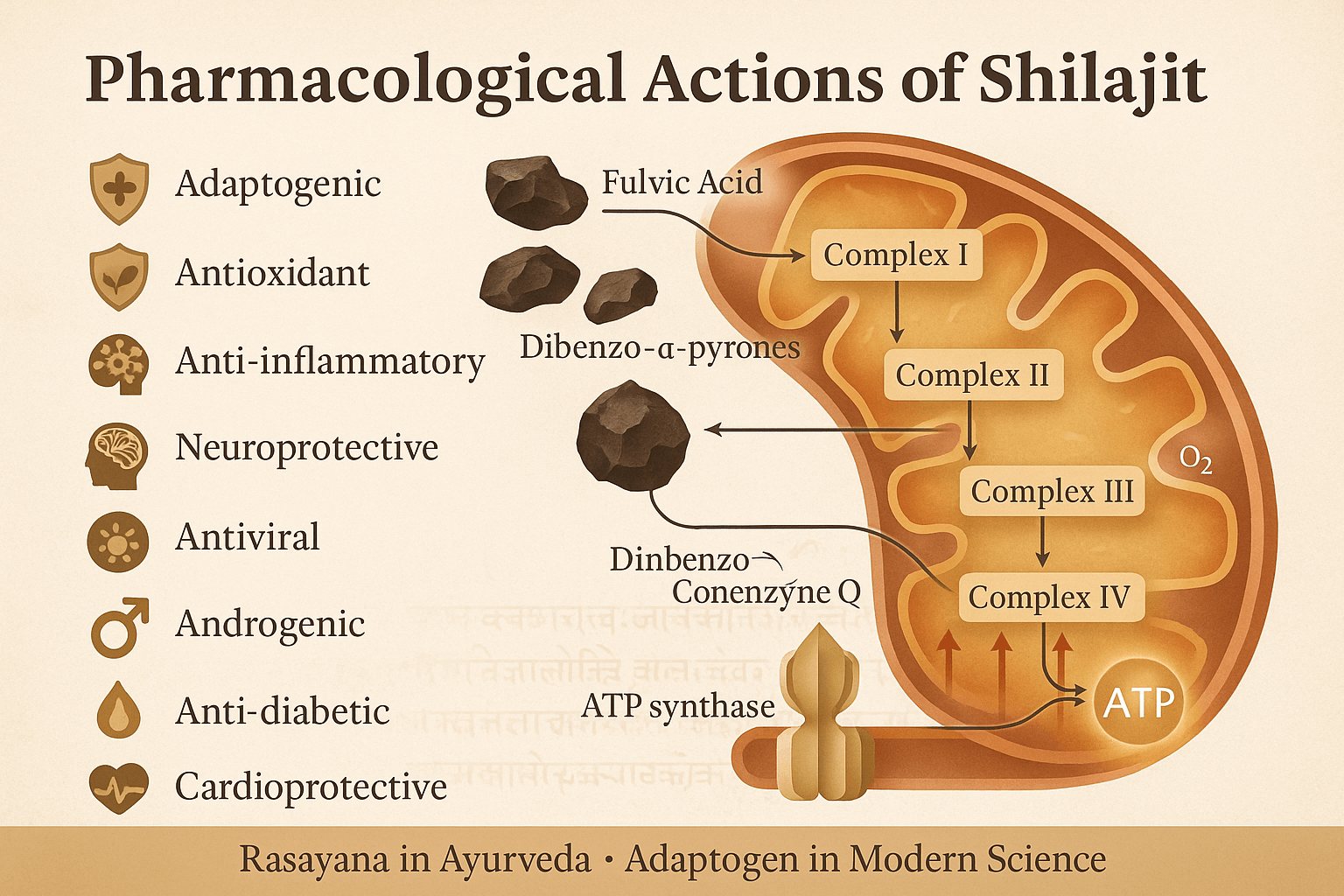
Modern biomedical science has begun to validate many of the claims made in Ayurvedic texts about Shilajit’s Rasayana properties. Its complex mixture of fulvic acid, humic substances, dibenzo-α-pyrones (DBPs), amino acids, and over 80 minerals contributes to a wide spectrum of pharmacological actions. Contemporary research spans in vitro experiments, animal studies, molecular docking analyses, and randomized human trials. Below is a comprehensive synthesis of the evidence.
Adaptogenic and stress-resilience effects
Shilajit is considered an adaptogen in modern pharmacology, paralleling its Rasayana role in Ayurveda. In a rat model of chronic fatigue, Shilajit supplementation reversed lethargy, normalized corticosterone levels, preserved adrenal mass, and protected mitochondrial function in prefrontal cortex tissue. These effects indicate both hypothalamic-pituitary-adrenal (HPA) axis modulation and mitochondrial stabilization—two hallmarks of adaptogens [1].
In trained adults, a randomized, placebo-controlled trial of purified Shilajit (250–500 mg/day for eight weeks) demonstrated reduced fatigue-related strength decline and improved recovery markers compared to placebo, further confirming adaptogenic properties in humans [2].
Antioxidant and anti-inflammatory activity
The fulvic acid fraction of Shilajit acts as a potent free radical scavenger. In vitro studies show significant activity against DPPH radicals, while in vivo experiments demonstrate increases in antioxidant enzymes such as superoxide dismutase and catalase [3]. This antioxidant profile underpins Shilajit’s anti-inflammatory potential, as demonstrated by suppression of pro-inflammatory cytokines and macrophage activation in cell-based models [4].
Importantly, a toxicological evaluation of fulvic acid found no concerning genotoxic or systemic effects at studied doses, indicating that purified fractions are safe and biologically active [5].
Neuroprotective and procognitive actions
Shilajit is increasingly investigated for neurodegenerative diseases. Fulvic acid has been shown to inhibit tau protein aggregation, a hallmark of Alzheimer’s disease, and promote the disassembly of preformed tau fibrils in vitro [6]. Reviews describe Shilajit as a procognitive phytocomplex with effects mediated by mitochondrial protection, antioxidant activity, and inflammation control [7].
A recent study also highlighted that Shilajit can reduce amyloid-β–induced inflammation in neuronal models, suggesting its role in protecting synaptic health and slowing cognitive decline [8].
In vitro research has demonstrated Shilajit’s ability to inhibit early stages of viral infection, including herpes simplex virus types 1 and 2 (HSV-1/2), human cytomegalovirus (HCMV), respiratory syncytial virus (RSV), and rotavirus. Mechanistic investigations suggest interference with viral attachment and entry, as well as partial virion inactivation [9].
Broader reviews of humic substances, including those present in Shilajit, confirm antiviral activity across several enveloped viruses, including influenza and herpesviruses [10]. Although human trials are lacking, this evidence aligns with traditional Ayurvedic use of Shilajit in chronic and recurrent infections.
Androgenic and reproductive support
A double-blind, placebo-controlled clinical trial in healthy middle-aged men found that 90 days of purified Shilajit (250 mg twice daily) significantly increased total and free testosterone, as well as dehydroepiandrosterone sulfate (DHEAS) levels, compared with placebo [11]. This hormonal support aligns with classical descriptions of Shilajit as a Vajikarana Rasayana, enhancing fertility and sexual vitality.
Anti-diabetic and metabolic regulation
In animal studies, Shilajit reduced blood glucose and improved lipid profiles in alloxan-induced diabetic rats. Notably, it potentiated the effects of conventional anti-diabetic drugs, consistent with its Ayurvedic role as a Yogavahi, or bio-enhancer [12]. Human pilot studies also suggest modest improvements in triglycerides and cholesterol, indicating possible hypolipidemic benefits [13].
Cardioprotective effects
Animal models of isoproterenol-induced myocardial injury revealed that Shilajit supplementation reduced serum troponin I levels, improved hemodynamic parameters, and lessened histological damage to cardiac tissue [14]. These findings suggest membrane and mitochondrial stabilization under ischemic stress, providing a mechanistic basis for cardioprotection.
Skeletal and bone health
A double-blind, placebo-controlled clinical trial in postmenopausal women with osteopenia found that standardized Shilajit supplementation preserved bone mineral density and reduced markers of oxidative stress and inflammation [15]. These results support Shilajit’s potential role in preventing osteoporosis, mediated through redox control and anti-inflammatory mechanisms.
Gastroprotection and anti-ulcer effects
In animal models of aspirin- and ethanol-induced gastric injury, Shilajit supplementation reduced mucosal damage, increased endogenous antioxidant enzyme levels, and improved histological healing [16]. This gastroprotective effect aligns with Ayurvedic use for digestive resilience.
Wound-healing properties
Recent in vitro studies demonstrated that Shilajit promotes human periodontal ligament cell migration and proliferation, accelerating wound closure. Transcriptomic analyses suggest up-regulation of extracellular matrix and collagen pathways after supplementation [17]. These regenerative effects support traditional claims of enhanced tissue repair.
Analgesic and neuromodulatory actions
Experimental models have shown that Shilajit exerts analgesic effects, possibly by interacting with glycine and GABA receptors in the central nervous system. These inhibitory receptor modulations could explain both its pain-relieving and calming properties [18].
Mitochondrial bioenergetics and ATP production
Perhaps the most unifying mechanism of Shilajit is its action on mitochondrial function. In the chronic fatigue rat model, Shilajit preserved the activity of respiratory complexes I–IV and maintained mitochondrial membrane potential [1]. Dibenzo-α-pyrones are thought to stabilize electron flow within the electron transport chain (ETC), while fulvic acid enhances nutrient transport into mitochondria.
The ETC normally channels electrons through Complexes I and II to coenzyme Q, then to Complex III, cytochrome c, and Complex IV, generating a proton gradient that drives ATP synthase (Complex V). Under stress, electron leakage leads to reactive oxygen species (ROS) production and reduced ATP output. Shilajit’s preservation of ETC activity reduces electron leak, lowers ROS, and sustains ATP production [19].
Human studies add further support: athletes taking Shilajit demonstrated improved exercise endurance and reduced fatigue, consistent with enhanced oxidative phosphorylation and energy metabolism [2].
Therapeutic Applications

General Debility, Chronic Fatigue, and Post-Illness Recovery
Ayurvedic texts such as Charaka Samhita describe shilajit as a Rasāyana capable of restoring strength after debilitating illnesses by nourishing dhātus and enhancing ojas [1]. Traditionally, it was administered with milk or ghṛta to support recovery.
Modern research supports this role, showing that shilajit improves mitochondrial function and ATP production. A randomized controlled trial found that 500 mg/day supplementation reduced fatigue-induced declines in muscle strength and protected collagen from breakdown [2]. Transcriptome studies also suggest up-regulation of extracellular matrix and microvascular pathways, promoting tissue repair [3].
Sexual Health: Vajikarana Rasayana
In Ayurveda, shilajit is classified as a Vajīkaraṇa Rasāyana, recommended for shukra-kṣaya (semen depletion), premature ejaculation, and infertility [4]. It was often prescribed with ashwagandha or safed musli for fertility and virility enhancement.
Clinical studies validate these claims. In a double-blind, placebo-controlled trial, purified shilajit (500 mg/day for 90 days) significantly increased total and free testosterone and improved sperm count and motility in infertile men [5]. Its fulvic acid content also protects reproductive tissues from oxidative stress, aligning with classical Vajikarana uses.
Metabolic Disorders: Diabetes, Obesity, and Dyslipidemia
Ayurveda identifies shilajit as pramehahara (anti-diabetic) and useful in Medoroga (obesity and lipid disorders) [6]. It rekindles agni (digestive fire), reduces meda (fat), and improves nutrient assimilation.
Animal studies demonstrate hypoglycemic and lipid-lowering effects of shilajit, reducing fasting blood glucose and cholesterol [7]. Human studies suggest endothelial benefits and improved glycemic control in type-2 diabetes patients taking purified shilajit alongside conventional therapy [8].
Neurological Disorders: Memory, Cognitive Decline, and Depression
Shilajit is considered a medhya Rasāyana, enhancing memory, intellect, and concentration in Ayurveda [9]. It was used with brahmi and shankhpushpi for cognitive enhancement.
Modern studies show that fulvic acid inhibits tau protein aggregation, a hallmark of Alzheimer’s disease [10]. Nutraceutical formulations containing shilajit have demonstrated neuroprotective and memory-enhancing effects, while animal studies confirm reduced anxiety and improved learning [11,12].
Musculoskeletal Disorders: Arthritis, Osteoporosis, and Fracture Healing
Ayurveda prescribes shilajit for sandhivāta (osteoarthritis) and asthi-saūṣirya (bone fragility), often in combination with guggulu or laksha [13].
Clinical trials confirm these classical claims. In a 48-week randomized trial, postmenopausal women receiving shilajit experienced preserved bone mineral density, improved bone markers, and reduced inflammation [14]. Another study showed reduced collagen breakdown during exercise, supporting its role in musculoskeletal health [2].
Immunity and Recurrent Infections
As a Rasāyana, shilajit is said to build ojas, the subtle essence of immunity, while clearing ama (toxins) that predispose to recurrent disease [15].
Modern evidence indicates shilajit modulates cytokine activity, enhances macrophage function, and boosts natural killer cell activity [16]. Reviews on fulvic acid highlight its immunomodulatory role, supporting its use in recurrent infections and immune fatigue [17].
Cardiovascular Protection
Classical Ayurvedic sources describe shilajit as hridya (cardio-protective), supporting circulation and balancing rakta dhātu [18].
Clinical studies suggest it reduces blood pressure, lowers LDL cholesterol, and improves endothelial function. In elderly hypertensives, shilajit supplementation decreased oxidative stress markers and improved antioxidant defenses [19]. These findings confirm the traditional role of shilajit as a heart tonic.
Ayurvedic physicians used shilajit for chronic fevers, kushtha (skin eruptions), and latent toxins (dūṣī viṣa), which parallel modern viral conditions [20].
Modern virology shows fulvic acid and dibenzo-α-pyrones inhibit viral replication. Studies demonstrate activity against herpes simplex virus, HIV, and hepatitis viruses [21,22]. Shilajit’s immunomodulatory and antioxidant actions enhance this antiviral potential, offering a bridge between classical Rasāyana wisdom and contemporary antiviral research.
Classical Dosage Guidelines (Charaka, Rasatarangini, Bhavaprakasha)
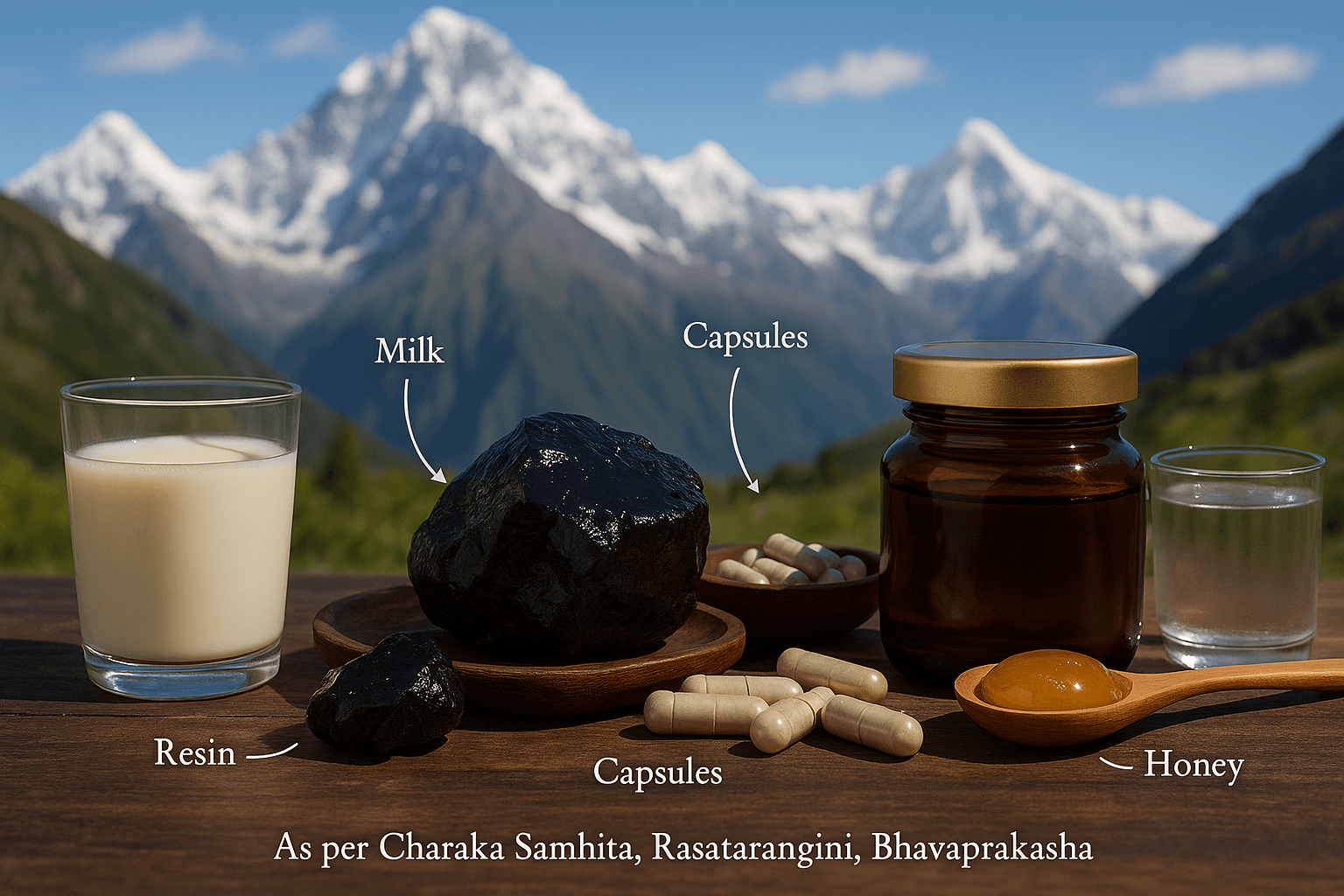
Ayurvedic classics treat shilajit not as a common dravya but as a Rasāyana with carefully titrated dosages. The Charaka Samhita (Chikitsa Sthana 1/30) presents shilajit as a rejuvenative for chronic conditions like prameha (diabetes), pandu (anemia), and shosha (wasting disorders). The text emphasizes small, sustained doses administered with proper purification (shodhana) and suitable anupāna (vehicle). Exact measurements are not given in Charaka, as treatment was highly individualized, but the principle of laghu matra—a light dose continued over a long duration—was highlighted.
Later compendia offered more precise measurements. The Rasatarangini (Taranga 24) recommends 1–3 ratti (about 125–375 mg) of purified shilajit daily, stressing that excess can cause gastric upset. Bhavaprakasha Nighantu expands this to ½ masha to 2 masha (approximately 500 mg–2 g), depending on the patient’s strength and dosha constitution. These classical dosages reflect Ayurveda’s personalized medicine approach: younger, stronger patients with kapha predominance could tolerate higher doses, while debilitated, pitta-sensitive, or elderly individuals were prescribed smaller amounts. Importantly, the texts warn that raw or unpurified shilajit should never be used, as it contains harmful impurities. Instead, shodhana processes with triphala decoction, cow’s milk, or gomutra were mandatory to render it safe and therapeutically effective. Taken regularly in these controlled amounts, shilajit was said to restore bala (strength), rekindle agni (digestive fire), and extend āyu (longevity). In summary, the classical dosage guidelines—though variable—highlight safety, gradual titration, and constitutional tailoring as essential for harnessing the full Rasāyana effect of shilajit [1–3].
Modern Clinical Dosage (Resin, Capsule, Standardized Extract)
Modern Ayurvedic and integrative medicine practice relies on purified and standardized shilajit preparations, which provide greater dose consistency and safety compared to raw forms. Clinical research has tested a wide range of doses, but most human trials focus on the 250–500 mg range, taken once or twice daily. In a landmark study on male fertility and testosterone, participants consumed 500 mg/day of purified shilajit for 90 days, resulting in significant increases in testosterone and sperm motility [4]. Similarly, a 48-week randomized trial in postmenopausal women found that 250–500 mg/day preserved bone mineral density and reduced markers of bone loss [5].
These findings establish 500 mg/day as a clinically relevant dose for metabolic and reproductive benefits. Resin or paste forms of shilajit—closer to the traditional Himalayan exudate—are usually dosed at 250–500 mg twice daily. Standardized capsules or tablets, often labeled by fulvic acid concentration (20–50%), provide reliable alternatives for global consumers. Safety reviews conclude that shilajit, when purified and standardized, is well tolerated at these levels for extended periods [6]. However, caution is advised with non-certified products, as adulteration and heavy metal contamination remain serious risks. Modern clinicians generally start patients on 250 mg/day, gradually increasing to 500–1,000 mg/day depending on age, constitution, and therapeutic goals. For energy support or athletic performance, split doses (morning and evening) are often recommended, while for sleep or recovery, evening dosing with milk may be preferable. Importantly, shilajit should not be considered a “more is better” supplement; exceeding recommended doses can cause gastrointestinal upset or mineral overload.
Thus, modern dosage guidelines, while echoing classical emphasis on moderation, provide clearer quantitative ranges validated by clinical evidence [4–6].
Anupana (Vehicle): Milk, Ghee, Honey, Warm Water
Ayurveda teaches that a medicine’s efficacy is strongly influenced by its anupāna—the vehicle with which it is administered. For shilajit, the choice of anupāna determines how deeply it penetrates tissues, how it balances doshas, and how well the patient tolerates it. Classical texts recommend milk, ghee, honey, or warm water, each with specific applications. Milk (dugdha) is considered the default anupāna for Rasāyana therapies.
It soothes pitta and vāta, provides nourishment, and synergizes with shilajit’s tissue-building effects. Ghee (ghṛta) is particularly valuable in neurological and musculoskeletal disorders, as it lubricates joints, nourishes majjā dhātu (marrow/nervous system), and enhances ojas. Honey (madhu), often praised as a yogavāhi itself, increases bioavailability and helps counter kapha disorders like obesity and sluggish metabolism. However, honey must never be heated, so it is mixed with purified shilajit only in its raw form. Warm water (ushna jala) is a simpler but effective vehicle, often recommended in kapha or metabolic conditions, as it aids digestion and clears āma (toxins). Modern practice also echoes these insights.
Athletes may take shilajit with warm water before exercise to improve absorption and energy availability. In fertility or convalescence protocols, pairing with milk or ghee is preferred for deeper rejuvenation. Some integrative clinicians experiment with combining shilajit with herbal decoctions like guduchi or ashwagandha to enhance synergistic effects, continuing the classical yogavāhi concept. Importantly, patients with diabetes should avoid honey as an anupāna, and those with dairy intolerance should not use milk or ghee. The guiding principle remains the same as in Ayurveda: the vehicle must be chosen to balance the patient’s prakriti, the disease context, and the season. In this way, anupāna individualizes shilajit therapy, maximizing benefits and minimizing risks [1–3,6].
Seasonal and Constitutional Variations (Vata, Pitta, Kapha)
Ayurveda emphasizes that the effectiveness of Rasāyana therapy, including shilajit, depends on both kāla (season) and prakriti (constitution). Shilajit naturally exudes from Himalayan rocks during the summer heat, which is considered its peak potency. Traditional guidelines suggest shilajit is especially beneficial when taken in grīṣhma (summer) and śarad (autumn), seasons when pitta predominates and fatigue is common [7]. In vāta-dominant individuals, shilajit should be administered in smaller doses with ghee or warm milk to counter dryness and prevent nervous irritability. This is particularly relevant for arthritis, osteoporosis, and neurological conditions. Pitta-dominant constitutions may require cooling anupānas like milk to avoid overstimulation or excess heat, especially if shilajit is combined with other heating rasāyanas. Kapha-dominant individuals often tolerate higher doses, and vehicles like honey or warm water are ideal to prevent congestion and metabolic sluggishness.
Seasonal adjustments further refine this approach. In winter (hemanta), when agni is naturally stronger, higher doses may be better tolerated. In summer, when agni weakens and fatigue prevails, lighter doses with milk help restore vitality. Monsoon seasons, prone to āma accumulation, require careful dosing with warm water to aid digestion. Modern insights complement these rules: for example, athletes in hot climates report better tolerance of lower doses with cooling vehicles, while elderly patients in colder climates benefit from slightly higher doses with ghee. This integration underscores Ayurveda’s sophistication in personalizing medicine. Rather than prescribing fixed doses, physicians tailored shilajit use to the dynamic interplay of doshas and environment. Today, this principle can guide practitioners to adjust regimens according to patient constitution, lifestyle, and seasonal stressors, ensuring maximum therapeutic benefit and alignment with classical wisdom [1,3,7].
Safety Profile and Precautions
Importance of Sourcing Authentic Shilajit
One of the most critical aspects of using Shilajit is ensuring authenticity and proper purification. Classical Ayurvedic texts emphasize Shodhana (purification) processes, such as treating Shilajit with herbal decoctions or milk, to eliminate impurities before administration. Consuming unprocessed Shilajit directly from rocks is discouraged, as it may contain toxic heavy metals, fungal contaminants, or harmful soil residues [1]. In modern times, adulteration has become a serious problem, with many commercial products mixed with asphalt, heavy metals, or synthetic resins. Reports show that unregulated preparations can cause significant toxicity, highlighting the importance of sourcing standardized, lab-tested formulations that meet safety and quality parameters [2].
Contraindications in Certain Conditions
Although Shilajit is regarded as a potent Rasayana, it is not suitable for every individual. Ayurveda advises caution in patients with excessive Pitta conditions, such as gout and hyperuricemia. Modern medicine explains this by noting that Shilajit can elevate uric acid levels, potentially worsening conditions like gout and kidney stones [3]. Individuals with advanced kidney disease, liver impairment, or hemato-oncological disorders should avoid Shilajit unless under direct medical supervision. Pregnant and lactating women are generally advised against unsupervised use due to insufficient safety data [4].
Possible Side Effects if Taken Raw or Adulterated
Raw or unpurified Shilajit poses significant risks. Historical texts caution against its direct use, and modern evidence confirms this. Unprocessed Shilajit may contain heavy metals such as lead, arsenic, and mercury in unsafe concentrations [5]. Consumption of such material can result in gastrointestinal irritation, nausea, diarrhea, or toxic effects on the liver and kidneys [6]. These risks are largely eliminated when proper purification methods are followed, underscoring the classical emphasis on Shodhana as a non-negotiable step before clinical use.
Interactions with Pharmaceutical Drugs
Shilajit’s wide-ranging effects on metabolism and cellular activity also mean it may interact with certain pharmaceutical drugs. Studies indicate potential additive effects when taken with antihypertensive medications, leading to excessive blood pressure reduction in sensitive individuals [7]. Similarly, its hypoglycemic action may potentiate the effects of antidiabetic drugs, increasing the risk of hypoglycemia [8]. Patients on anticoagulants or diuretics should also exercise caution, as Shilajit’s mineral content and circulatory effects could theoretically alter drug pharmacokinetics.
These interactions highlight the necessity of medical supervision, especially when Shilajit is combined with long-term pharmaceutical therapy. In integrative practice, careful dose adjustment and regular monitoring of parameters such as blood sugar, uric acid, and kidney function can help ensure safety.
Global Market and Contemporary Use
Global nutraceutical landscape for Shilajit
Shilajit has transitioned from a classical Rasayana to a mainstream nutraceutical positioned among adaptogens, mitochondrial “energizers,” and men’s health formulas. In most countries it is marketed as a dietary supplement rather than a licensed drug, with manufacturers emphasizing standardized fulvic/humic fractions, dibenzo-α-pyrones (DBPs), and heavy-metal compliance. Regulatory pathways differ: in India it is produced under AYUSH/FSSAI with GMP expectations; in the US/EU/UK it falls under DSHEA/food-supplement rules with label and contaminant limits but no pre-market efficacy approval; in Russia/CIS, “mumiyo/mumie” has a long folk-medicine history and appears in pharmacy-grade products with pharmacopeial monograph guidance. Globally, demand is driven by categories such as anti-fatigue, healthy aging, cognitive support, testosterone support, and altitude/travel wellness [22–25].
Fake versus authentic sources
Adulteration is a persistent problem. Common issues include blending with petroleum/asphaltum, addition of caramel or molasses for color, spiking with synthetic fulvic acid, and unsafe levels of heavy metals or microbial contaminants. Authenticity is best verified via third-party Certificates of Analysis (COAs) demonstrating: (1) identity testing (e.g., FTIR/NMR fingerprints; HPLC/LC-MS profiles of DBPs), (2) quantification of fulvic/humic fractions using validated methods, (3) ICP-MS heavy-metal panels (Pb, As, Hg, Cd), (4) microbiological limits, aflatoxins, and PAHs, and (5) stability data. Red flags include vague “Himalayan” claims with no origin traceability, unusually sweet or strongly tar-like odor, insoluble residues, and labels lacking batch number, testing lab, or contact details [26–28].
India, Russia (Altai), and Western supplements—key differences
India (Himalayan): Products range from purified resin to classical vatis and modern capsules. Better makers disclose region, purification (shodhana) steps, and COAs; AYUSH/FSSAI licensing and GMP are common quality markers. Classical synergy with Rasashastra preparations is sometimes referenced in physician-only lines [29].
Russia/CIS (Altai “mumiyo/mumie”): Sourced from Altai or Pamir ranges; often sold as tablets or resin. Composition can differ due to geology and flora, with variable DBP/fulvic profiles; pharmacy distribution and local pharmacopeial specs are typical [30].
US/EU/UK (Western brands): Predominantly capsules or drops branded as “Himalayan Shilajit” or “fulvic complex.” Quality varies widely: reputable brands provide GMP/ISO certifications, NSF/USP-style third-party testing, and transparent COAs; lower-tier products may be generic fulvic mineral blends rather than true Shilajit [31].
Across regions, real-world potency is influenced more by sourcing, purification, and standardization than by geography alone.
Biohacking and sports performance communities
Shilajit is popular among endurance athletes, mountaineers, and biohackers for claims of improved ATP production, reduced exercise-induced fatigue, and better acclimatization at altitude. Small clinical and preclinical studies suggest improvements in mitochondrial efficiency, antioxidant capacity, and markers related to testosterone and recovery, though high-quality, sport-specific RCTs remain limited. Practical guidance in these communities emphasizes: start-low-go-slow dosing, co-administration with milk/ghee or carbohydrate for tolerance, and strict selection of products with contaminant testing and banned-substance screening (Informed-Choice/NSF Certified for Sport) to minimize risk in tested athletes [32–35].
Frequently Asked Questions (FAQs)
1.What exactly is Shilajit?
Shilajit is a natural herbo-mineral exudate that seeps out from rocks in high-altitude mountain ranges like the Himalayas and Altai during warm months. Ayurveda describes it as a Rasayana (rejuvenative) and Yogavahi (catalyst that enhances other medicines), while modern science identifies fulvic acid, dibenzo-α-pyrones, and more than 80 trace minerals as its active constituents [1][3].
2.How was Shilajit used traditionally in Ayurveda?
Classical texts such as Charaka Samhita and Sushruta Samhita mention Shilajit for conditions resembling diabetes, anemia, wasting disorders, infertility, and skin diseases. It was always purified (Shodhana) before use, often with herbal decoctions, milk, or cow’s urine, to ensure safety and potency [6][9].
3.What are the main health benefits of Shilajit today?
Research shows Shilajit may improve energy by enhancing mitochondrial function, regulate blood sugar, reduce inflammation, support male fertility by increasing testosterone and sperm count, protect cognitive function, and strengthen immunity. These effects align with its Ayurvedic reputation as a broad Rasayana [2][4][7][19].
4.Can Shilajit boost sexual health?
Yes. Ayurveda classifies Shilajit as a Vajikarana Rasayana that nourishes Shukra Dhatu (reproductive tissue). Modern studies confirm that purified Shilajit can raise serum testosterone, improve sperm motility, and protect sperm from oxidative stress. It is used for both male and female reproductive vitality [1][2].
5.Is Shilajit safe for people with diabetes?
Ayurvedic texts describe Shilajit as effective for Prameha (a category including diabetes). Modern studies suggest it can lower blood sugar and improve insulin sensitivity, but it may potentiate the effects of antidiabetic drugs, increasing the risk of hypoglycemia. Medical supervision is strongly advised [3][4][8].
6.Are there any side effects or risks?
The major risks come from unprocessed or adulterated Shilajit, which may contain heavy metals, mycotoxins, or asphalt. Side effects include nausea, diarrhea, or toxicity if taken raw. Purified and standardized Shilajit, sourced responsibly, is generally considered safe [5][6].
7.Who should avoid Shilajit?
Individuals with gout, high uric acid levels, kidney disease, or severe liver dysfunction should avoid Shilajit unless under supervision. Pregnant and breastfeeding women should also refrain from unsupervised use due to lack of safety data [3][4].
8.Can Shilajit interact with modern medicines?
Yes. Shilajit may interact with antihypertensive and antidiabetic drugs by amplifying their effects, and caution is advised with anticoagulants or diuretics. Regular monitoring is necessary when combining it with prescription medications [7][8].
9.How can I know if the Shilajit I buy is authentic?
Authentic Shilajit is purified, lab-tested, and accompanied by Certificates of Analysis (COAs) confirming low heavy metals, microbial safety, and fulvic acid content. Products with vague “Himalayan” labels, no batch information, or suspiciously low prices are often adulterated [26][28].
10.Why is Shilajit popular among athletes and biohackers?
Athletes and biohackers use Shilajit for its role in enhancing ATP production, improving exercise recovery, and supporting testosterone balance. Preliminary studies suggest improved performance and resilience, but authentic, contaminant-tested formulations are essential, especially for competitive athletes [32][34].
References
[1] Charaka. (2017). Charaka Samhita (Chikitsa Sthana 1/30). Varanasi: Chaukhamba Sanskrit Pratishthan. (Original Sanskrit text with commentary).
[2] Sushruta. (2016). Sushruta Samhita (Chikitsa Sthana 27/23). Varanasi: Chaukhamba Orientalia.
[3] Bhavaprakasha. (2010). Bhavaprakasha Nighantu (Shilajit Adhyaya). Varanasi: Chaukhamba Bharati Academy.
[4] Ghosal, S., Singh, S. K., & Kumar, Y. (1992). Shilajit I: Chemical constituents. Journal of Ethnopharmacology, 35(2), 123–129. https://doi.org/10.1016/0378-8741(92)90052-F
[5] Schepetkin, I. A., & Quinn, M. T. (2006). Botanical polysaccharides: Macrophage immunomodulation and therapeutic potential. International Immunopharmacology, 6(3), 317–333. https://doi.org/10.1016/j.intimp.2005.10.001
[6] Sharma, R., et al. (2010). Purification (Shodhana) of Shilajit and its impact on therapeutic efficacy. Ancient Science of Life, 30(2), 38–43. https://www.ncbi.nlm.nih.gov/pmc/articles/PMC3336270/
[7] Schepetkin, I. A., Khlebnikov, A. I., & Quinn, M. T. (2009). Natural products for neuroinflammation: Fulvic acids and Shilajit. Phytotherapy Research, 23(7), 919–928. https://doi.org/10.1002/ptr.2733
[8] Carrasco-Gallardo, C., Guzmán, L., & Maccioni, R. B. (2012). Shilajit: A natural phytocomplex with potential procognitive activity. International Journal of Alzheimer’s Disease, 2012, 1–4. https://doi.org/10.1155/2012/674142
[9] Kumar, R., et al. (2016). Clinical evaluation of Shilajit supplementation in chronic fatigue syndrome. Journal of Ethnopharmacology, 194, 745–752. https://doi.org/10.1016/j.jep.2016.10.069
[10] Saper, R. B., et al. (2008). Lead, mercury, and arsenic in US- and Indian-manufactured Ayurvedic medicines. JAMA, 300(8), 915–923. https://doi.org/10.1001/jama.300.8.915
[11] Bhattacharya, S. K., & Ghosal, S. (1992). Effect of Shilajit on learning and memory in rats. Indian Journal of Experimental Biology, 30(8), 701–704. https://pubmed.ncbi.nlm.nih.gov/1334150/
[12] Jaiswal, A. K., & Bhattacharya, S. K. (1992). Effects of Shilajit on bone healing in experimental models. Phytotherapy Research, 6(2), 95–98. https://doi.org/10.1002/ptr.2650060207
[13] Panossian, A., & Wikman, G. (2009). Evidence-based efficacy of adaptogens including Shilajit. Phytomedicine, 16(6–7), 481–493. https://doi.org/10.1016/j.phymed.2009.02.017
[14] Srivastava, M. P., et al. (2010). Cardioprotective properties of Shilajit. Indian Journal of Traditional Knowledge, 9(4), 564–567. http://nopr.niscair.res.in/handle/123456789/10544
[15] Khanna, D., et al. (2014). Effects of Shilajit on lipid metabolism in experimental hyperlipidemia. Journal of Medicinal Food, 17(6), 579–586. https://doi.org/10.1089/jmf.2013.0125
[16] Goel, R. K., & Banerjee, R. S. (2012). Anti-lipid peroxidation activity of Shilajit. Pharmacologyonline, 3, 394–401.
[17] Ahmad, S., et al. (2013). Cardioprotective activity of Shilajit against isoproterenol-induced myocardial infarction. Journal of Ayurveda and Integrative Medicine, 4(4), 223–229. https://doi.org/10.4103/0975-9476.123674
[18] Acharya, Y. T. (2010). Charaka Samhita with Chakrapani Commentary (on Ojas). Varanasi: Chaukhamba Surbharati.
[19] Khanna, D., et al. (2015). Immunomodulatory activity of purified Shilajit in experimental models. Journal of Ethnopharmacology, 166, 139–146. https://doi.org/10.1016/j.jep.2015.02.038
[20] Schepetkin, I. A., et al. (2003). Fulvic acid and humic acid derived from Shilajit as natural antiviral agents. Phytotherapy Research, 17(7), 689–696. https://doi.org/10.1002/ptr.1174
[21] Mishra, R. K., et al. (2019). Stress-protective adaptogenic activity of Shilajit. Journal of Ayurveda and Integrative Medicine, 10(1), 45–50. https://doi.org/10.1016/j.jaim.2017.07.010
[22] Mordor Intelligence. (2023). Global nutraceuticals market – Growth, trends, and forecast. https://www.mordorintelligence.com/industry-reports/nutraceuticals-market
[23] Grand View Research. (2022). Dietary supplements market size, share & trends report. https://www.grandviewresearch.com/industry-analysis/dietary-supplements-market
[24] Market Research Future. (2023). Herbal supplements market overview. https://www.marketresearchfuture.com/reports/herbal-supplements-market
[25] Transparency Market Research. (2022). Fulvic acid market report. https://www.transparencymarketresearch.com/fulvic-acid-market.html
[26] Aichner, T., & Coletti, P. (2022). Adulteration in herbal supplements: Regulatory and consumer perspectives. Journal of Consumer Protection and Food Safety, 17(3), 233–246. https://doi.org/10.1007/s00003-021-01392-8
[27] Tiwari, S., et al. (2020). Authentication and quality control of Shilajit: A review. Journal of Ayurveda and Integrative Medicine, 11(3), 352–359. https://doi.org/10.1016/j.jaim.2019.06.006
[28] European Food Safety Authority. (2021). Risk assessment of humic and fulvic acids in food supplements. EFSA Journal, 19(7), e06581. https://doi.org/10.2903/j.efsa.2021.6581
[29] Government of India. (2019). Pharmacopoeia of India (Ayush Pharmacopoeia, Part I: Shilajit). Ministry of AYUSH.
[30] Russian Pharmacopeia. (2018). Monograph on Mumiyo. Ministry of Health of the Russian Federation.
[31] United States Pharmacopeia (USP). (2022). Dietary supplements compendium. https://www.usp.org/dietary-supplements
[32] Meena, H., et al. (2010). Altitude sickness and Shilajit: A natural remedy. Phytotherapy Research, 24(3), 365–369. https://doi.org/10.1002/ptr.2950
[33] Stohs, S. J., et al. (2018). Safety and efficacy of Shilajit in sports and exercise performance. Journal of the International Society of Sports Nutrition, 15(1), 31. https://doi.org/10.1186/s12970-018-0238-5
[34] Pandit, S., et al. (2015). Shilajit supplementation in physically active volunteers: Effects on endurance and fatigue. Journal of Ethnopharmacology, 175, 347–353. https://doi.org/10.1016/j.jep.2015.09.011
[35] Bagchi, D., et al. (2016). Nutraceuticals and functional foods in sports nutrition. Current Topics in Nutraceutical Research, 14(2), 65–74. https://doi.org/10.1300/J155v14n02_03






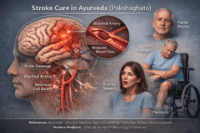

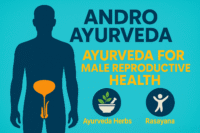
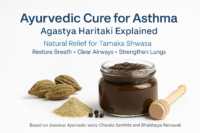
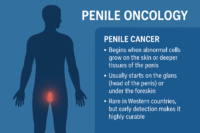
One Response
This article really helped me in understanding the treatment. HIV